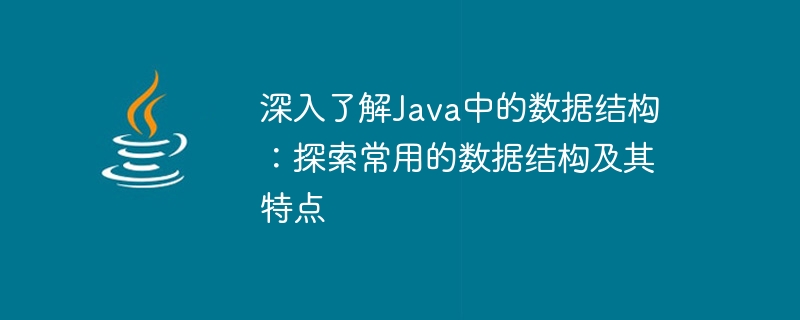

In-depth understanding of data structures in Java: To explore commonly used data structures and their characteristics, specific code examples are required
Introduction: Data structures are an important concept in computer science , it refers to the way data is organized and stored. In Java programming, reasonable selection and use of data structures can improve the efficiency and maintainability of the code. This article will take an in-depth look at commonly used data structures in Java, including arrays, linked lists, stacks, queues, and hash tables, and provide specific code examples.
int[] nums = new int[5]; nums[0] = 1; nums[1] = 2; nums[2] = 3; nums[3] = 4; nums[4] = 5;
class ListNode {
int val;
ListNode next;
ListNode(int val) {
this.val = val;
this.next = null;
}
}
ListNode head = new ListNode(1);
ListNode second = new ListNode(2);
ListNode third = new ListNode(3);
head.next = second;
second.next = third;Stack<Integer> stack = new Stack<>(); stack.push(1); stack.push(2); stack.push(3); int top = stack.peek(); // 返回栈顶元素 int pop = stack.pop(); // 删除并返回栈顶元素
Queue<Integer> queue = new LinkedList<>(); queue.add(1); queue.add(2); queue.add(3); int front = queue.peek(); // 返回队首元素 int remove = queue.remove(); // 删除并返回队首元素
Map<String, Integer> map = new HashMap<>();
map.put("one", 1);
map.put("two", 2);
map.put("three", 3);
int value = map.get("two"); // 获取键对应的值
boolean containsKey = map.containsKey("one"); // 检查键是否存在Summary:
Through the introduction of this article, we have learned about the commonly used data structures in Java, including arrays, linked lists, stacks, queues and hash tables, and Corresponding code examples are provided. In actual programming, we must choose an appropriate data structure according to the actual situation to improve the efficiency and readability of the code. At the same time, in order to better understand the data structure, readers are recommended to deepen their understanding of different data structures through practice.
The above is the detailed content of In-depth exploration of the characteristics and applications of commonly used data structures in Java. For more information, please follow other related articles on the PHP Chinese website!




